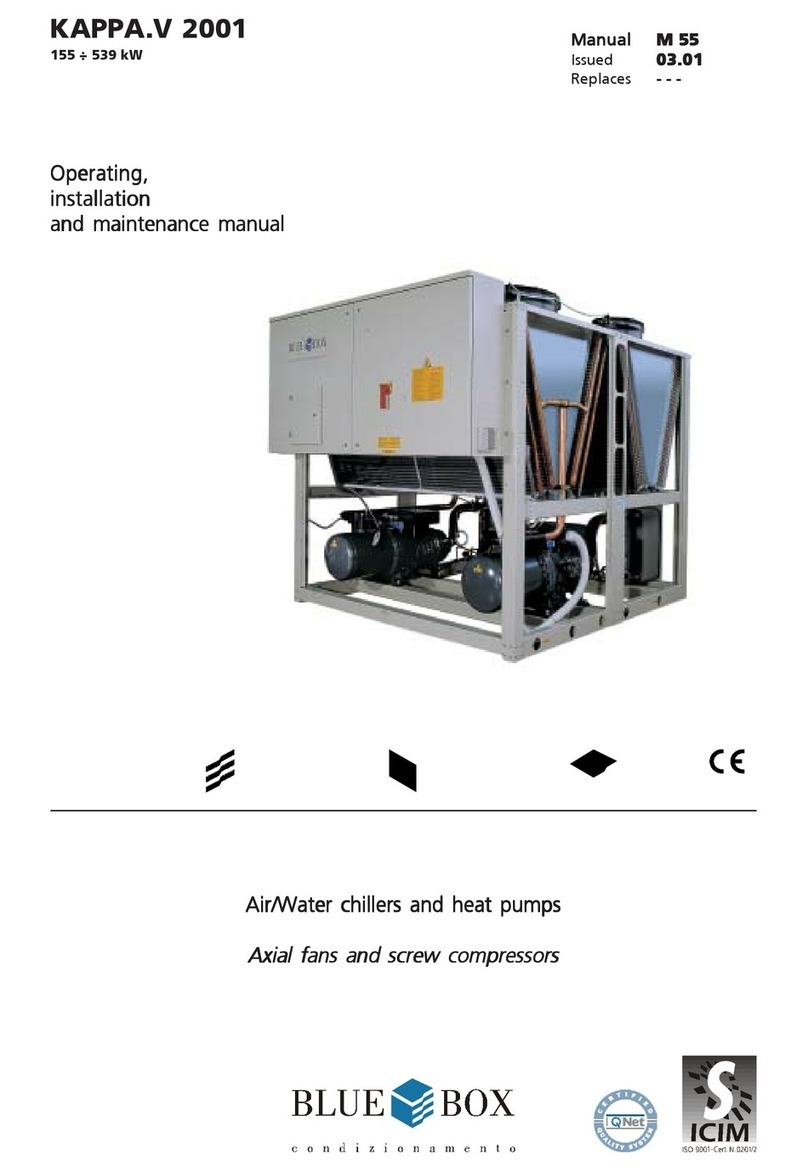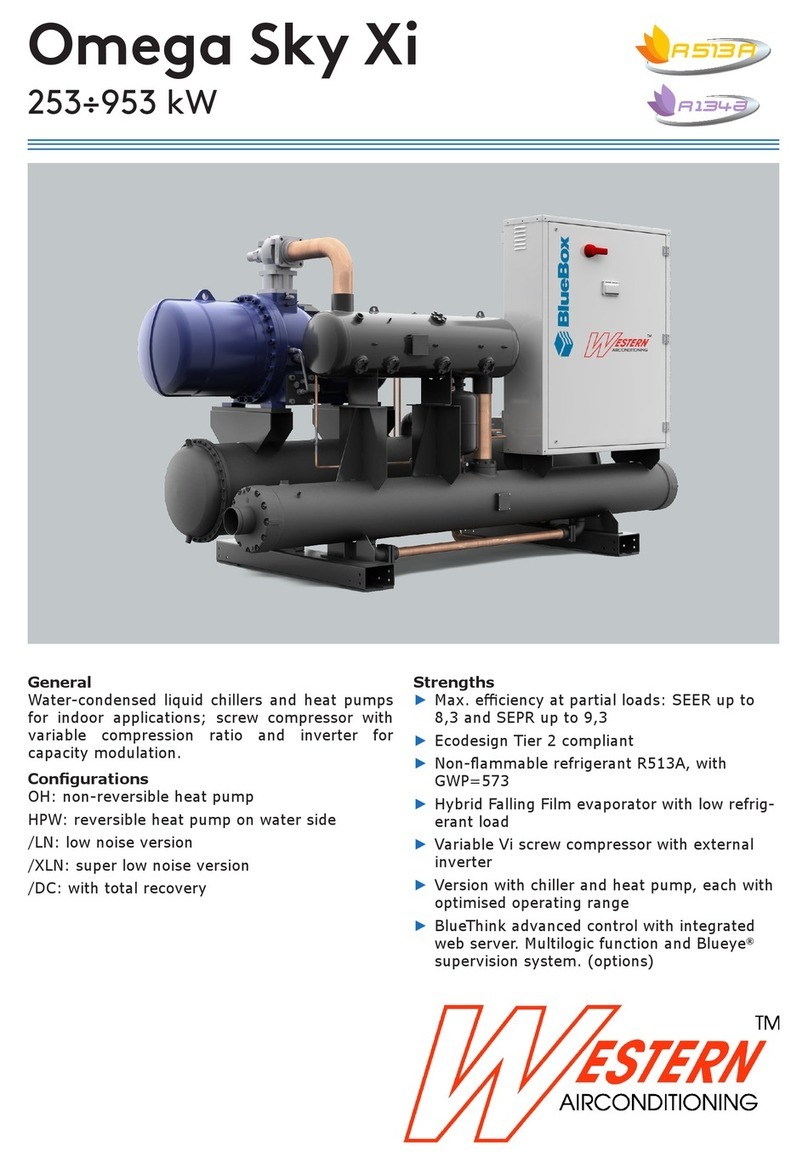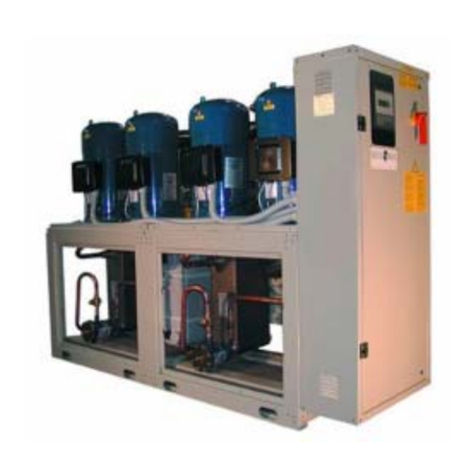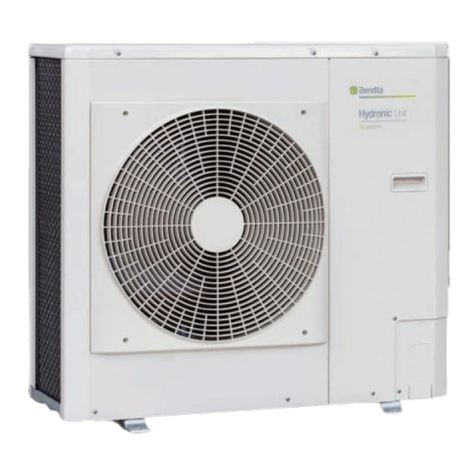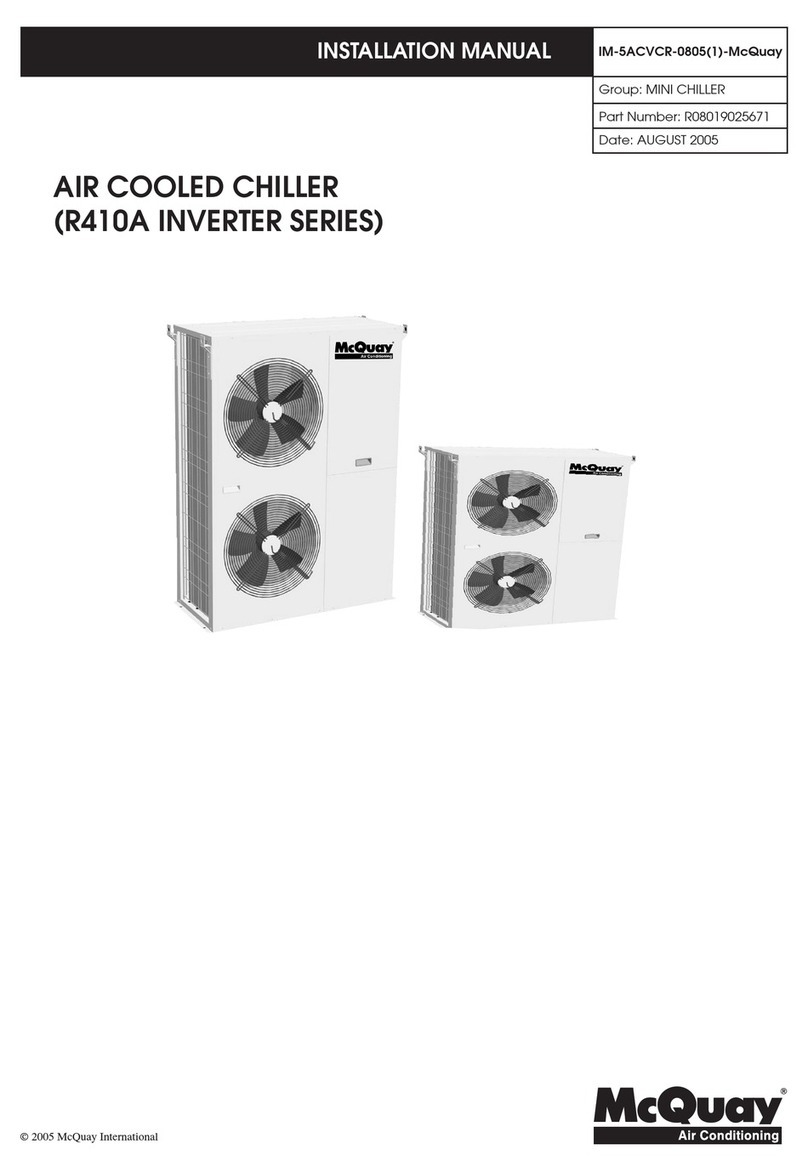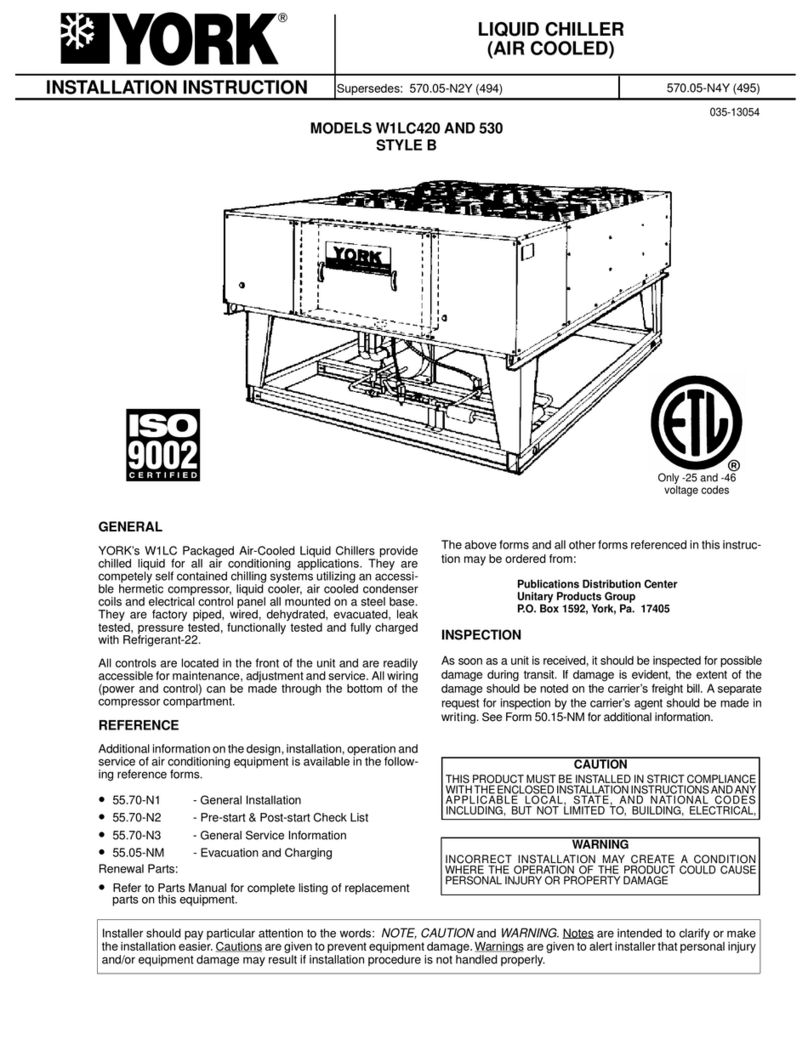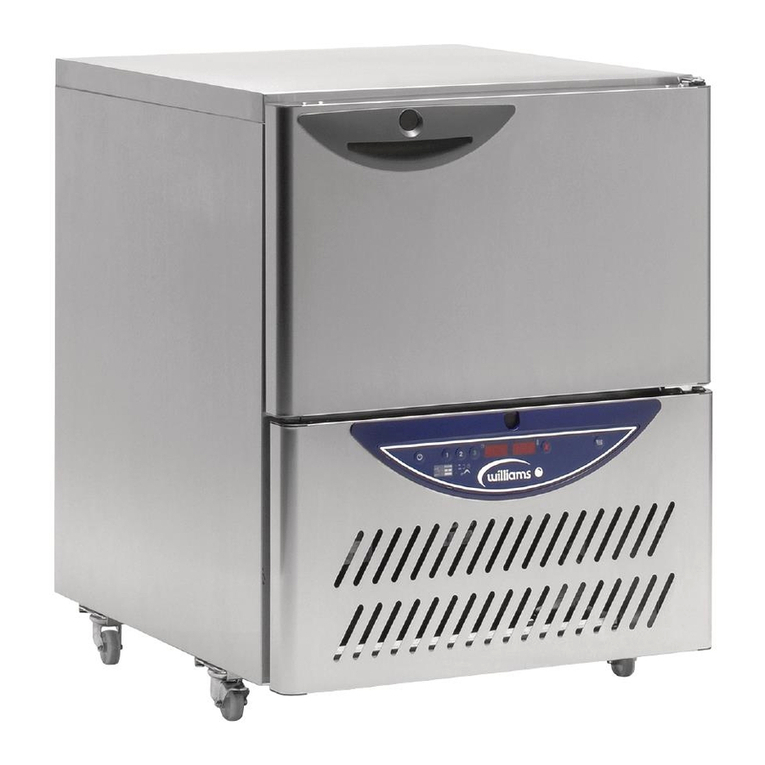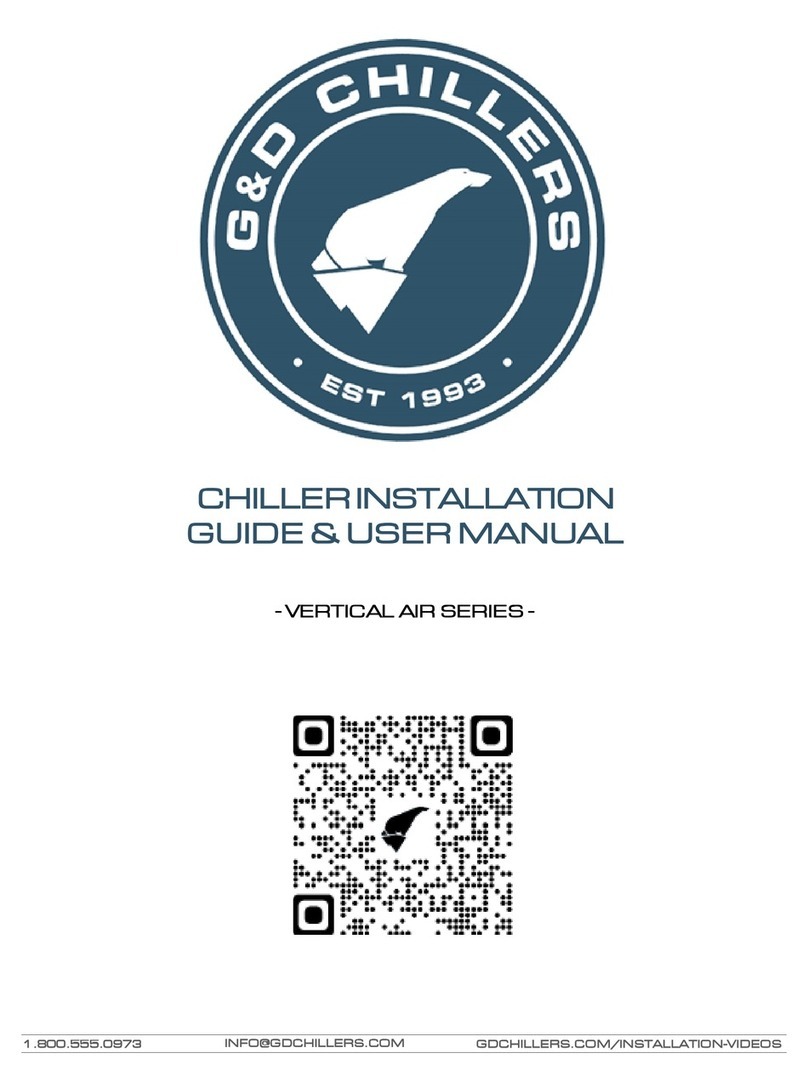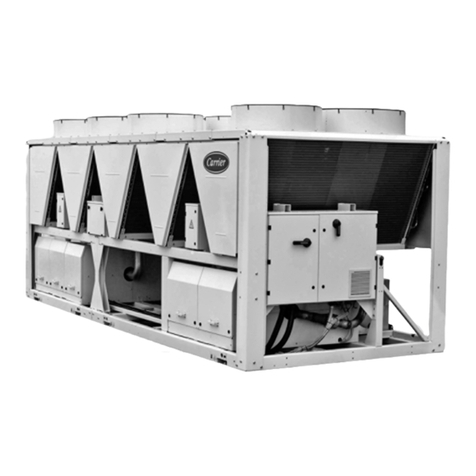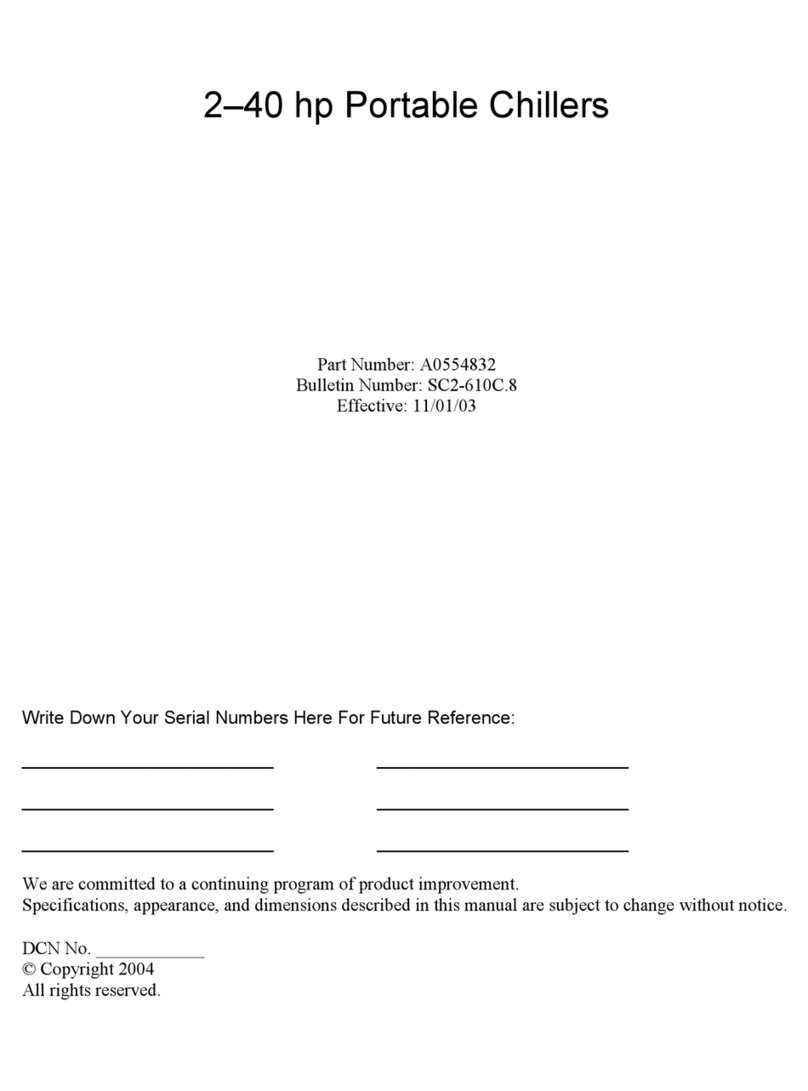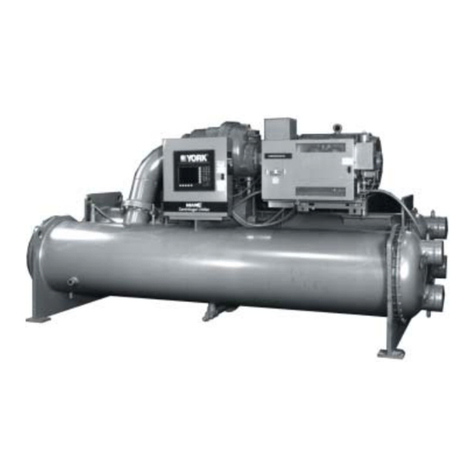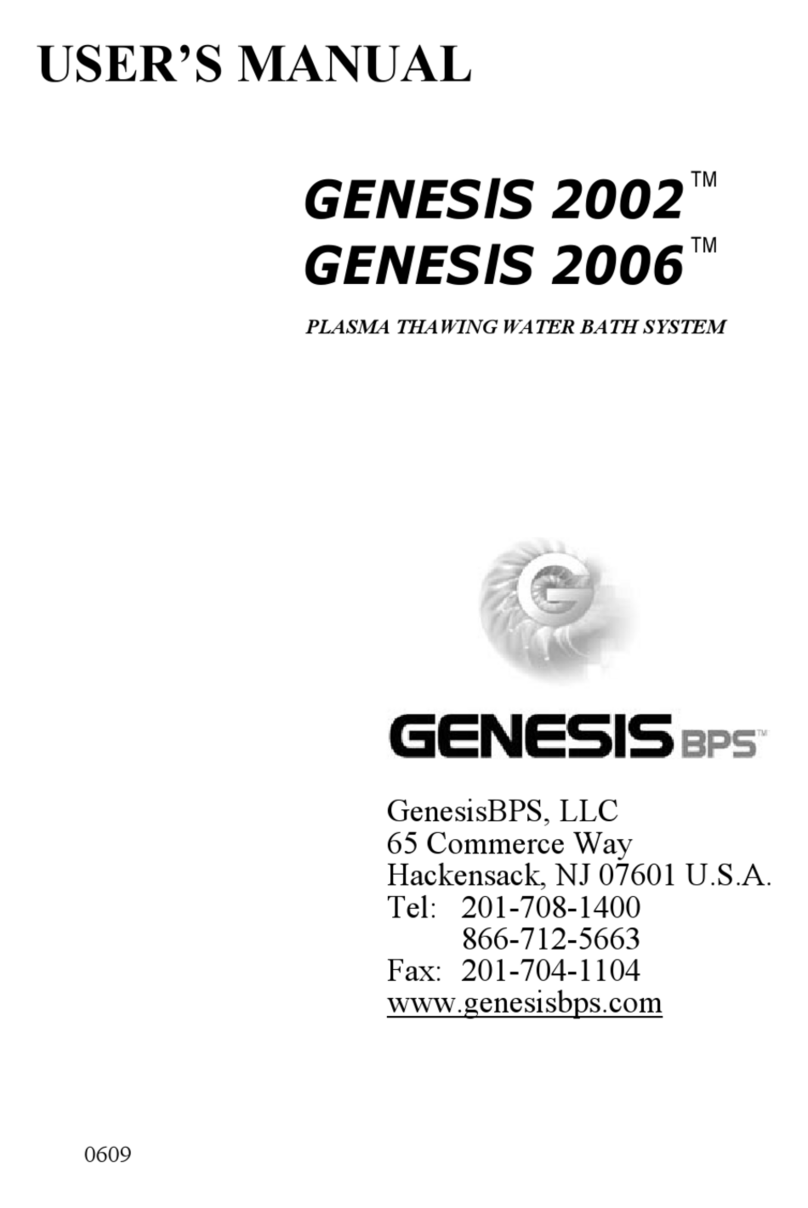BlueBox Zeta Rev User manual

Zeta Rev EN
26-10-2016
Installation, use and maintenance manual

2
We reserve the right to make changes without any prior notice.Translation from original instructions
THANK YOU
Thank you for choosing our product.
It is the result of many years’ experience and careful design and has been built with rst-class quality materials and advan-
ced technologies.
The CE marking also guarantees that the equipment meets the requirements of the European Machinery Safety Directive.
The quality level is constantly monitored, and therefore our products are synonymous with Safety, Quality and Reliability.
Changes considered necessary for product improvement may be made to the stated data at any time without any obligation
to give prior notice.
Thank you again
Read this manual carefully before installing, testing or starting this unit.
Give this manual and all complementary documentation to the operator of the system who will be responsible
for keeping them so they are always available if needed.
The images and drawings contained herein are examples only.

3
We reserve the right to make changes without any prior notice. Translation from original instructions
Contents
1 Introduction 6
1.1 Conformity 6
1.2 Description 6
1.2.1 Symbols 6
1.2.2 Labels 7
2 Safety 8
2.1 General safety precautions 8
2.1.1 Discharge of the safety valves 9
2.1.2 Emergency stop 9
2.2 Basic rules 10
2.2.1 Waterowrateattheheatexchangers 11
2.2.2 Water composition 11
2.2.3 Minimumwatercontentinthesystem 12
2.2.4 Installingtheowswitch 13
2.2.5 Unit operating in heat pump mode 13
2.2.6 Operationwithwatertotheevaporatoratlowtemperature 14
2.2.7 Operationwithwatertothecondenseratlowtemperature 14
2.2.8 Condensate drain (only for heat pump units) 15
2.2.9 Hydraulic connection to the heat recuperator (DC option) 15
2.2.10 Hydraulic connection to the desuperheater (DS option) 16
2.3 Noise 17
2.4 Residual risks 17
2.5 Safety information on the refrigerant uid 18
2.5.1 Hazards and health consequences 18
3 Receiving the product and storage 19
3.1 Reception 19
3.2 Transport 19
3.3 Handling 20
3.4 Storage 22
4 Product description 23
4.1 Intended use 23
4.2 Unintended use 23
4.3 Control and safety devices 24
4.4 Principles of operation 24
4.5 Structure 24
4.6 Specications 24
4.7 Control panels 25
4.7.1 Parametric control 25

4
We reserve the right to make changes without any prior notice.Translation from original instructions
4.7.2 Programmable control 27
4.8 Wiring diagram 27
5 Installation 28
5.1 Dimensions and weight 28
5.2 Installation site 28
5.3 Installation 29
5.3.1 Externalpositioning 29
5.3.2 Noise attenuation 31
5.3.3 Minimum distances 31
5.4 Hydraulic connections 32
5.5 Electrical connections 34
5.6 Refrigeration connections 35
5.6.1 Piping implementation 35
5.6.2 LEversion:unitinstalledatahigherlevelthantheremoteexchanger 36
5.6.3 LEversion:unitinstalledatalowerlevelthantheremoteexchanger 37
5.6.4 LE/HPversion:unitinstalledatahigherlevelthantheremoteexchanger 37
5.6.5 LE/HPversion:unitinstalledatalowerlevelthantheremoteexchanger 38
5.7 Expansion valve 38
5.8 Vacuum and refrigerant charge 39
5.9 Topping up with oil 40
6 Commissioning 41
6.1 Preliminary operations 41
6.1.1 Checkingthepre-chargeoftheexpansionvessel 42
6.1.2 Checkingthevolumeoftheexpansionvessel 42
6.1.3 Preliminaryinstructionsforunitswithremoteexchanger 43
6.2 First starting 44
6.2.1 Hydraulic tests 44
6.2.2 Functional tests 44
6.2.3 Adjustment of the inverter of the user-side pump 45
6.2.4 Adjustmentforconstantwaterowrate"FlowzerVP" 45
6.2.5 Adjustmentforconstantwaterpressure"FlowzerVD" 47
6.3 Calibration of safety components 48
6.4 Checks during operation 49
6.5 Alarms and malfunctions 50
6.6 Temporary stop 51
6.7 Stop for long periods of time 51
7 Maintenance 52
7.1 Adjustments 52
7.2 External cleaning 53
7.2.1 CleaningtraditionalnnedcoilsinCu/Al 53
7.2.2 Cleaning the microchannel coils 54

5
We reserve the right to make changes without any prior notice. Translation from original instructions
7.2.3 Cleaning e-coated microchannel coils 54
7.3 Internal cleaning 56
7.3.1 Cleaning the unit 56
7.3.2 Cleaningtheplateheatexchangers 57
7.4 Periodic checks 58
7.5 Unscheduled maintenance 59
7.5.1 Specialwork 59
8 Decommissioning 60

6
We reserve the right to make changes without any prior notice.Translation from original instructions
1 INTRODUCTION
1.1 Conformity
With regard to relevant regulations and directives, see the declaration of conformity that is an integral part of the manual.
1.2 Description
1.2.1 Symbols
A description of the main symbols used in this manual and on the labels afxed to the unit is given below.
Danger symbol; take extreme care.
Danger symbol; moving mechanical parts.
Danger symbol; live parts.
Warning symbol; important information
Note symbol; suggestions and advice

7
We reserve the right to make changes without any prior notice. Translation from original instructions
1.2.2 Labels
For the constructional features, available models and technical data, please refer to the Technical Booklet.
The model, serial number, features, power supply voltage and so on are shown on the labels afxed to the unit (the following
illustrations are shown only as an example).
The Manufacturer adopts a continuous development policy and, in this perspective, reserves the right to
make changes and improvements to the documentation and to the units without prior notice.
The technical booklet, the labels placed directly on the unit and the various diagrams referred to below, must
be considered an integral part of this manual.
Do not remove or alter the labels placed on the unit.

8
We reserve the right to make changes without any prior notice.Translation from original instructions
2 SAFETY
2.1 General safety precautions
A space of about 2 metres around the unit is identied as external danger zone.
If the unit is positioned in an unprotected place that can be reached by unqualied persons, access to this area must be
prohibited by special guarding.
The equipment operator is responsible for complying with regulatory obligations.
The equipment operator is the person who has actual control over the technical operation and free access, which means
the possibility of monitoring its components and their operation and the possibility of granting access to third parties.
The equipment operator has the power (including nancial power) to decide on technical modications, checks and repairs.
The equipment operator may give instructions to employees or to external companies for carrying out maintenance and
repair operations.
Only an authorised operator should be able to access the unit.
Installation and maintenance or repair of the unit must be carried out by personnel and companies holding a certicate
issued by a certication body designated by a member state that certies the requirements contained in Commission Re-
gulation (EC) No. 517/2014.
The internal danger zone can be accessed by removing the protective devices and entering the unit.
On no account must unqualied personnel be allowed to enter the unit and no one should be allowed to enter before the
power to it has been turned off.
The user can interact with the unit only through the control and external OK signals.
Only authorised knowledgeable personnel may access the unit in compliance with safety in the workplace regulations.
Council Directive 89/391/EEC, of 12 June 1989, on the introduction of measures to encourage improvements in the health
and safety of workers at work.
Also, knowledge and understanding of the manual are indispensable for reducing risks and for improving the health and
safety of workers.
The operator who enters the unit must have sufcient knowledge to perform the various activities throughout the technical
life of the machine.
The operator must know what to do when faced with possible anomalies, malfunctions or conditions of danger to himself or
others, and in any case, he must comply with the following instructions:
Stop the unit immediately by using the emergency device.
Do not do anything that goes beyond your duties and technical knowledge.
Inform the manager immediately and do not take personal initiatives.
Before carrying out any work on the unit, make sure you have turned off the power supply to it. Refer to the
section on maintenance work.

9
We reserve the right to make changes without any prior notice. Translation from original instructions
In units with capacitors and/or inverters, certain components can remain live for several minutes even after
having turned off the main switch.
Wait 10 minutes before working on the electrical parts of the unit.
Circuits supplied from external sources (made with orange cable) can remain live even after the power sup-
ply to the unit has been turned off.
Work on the unit only if there is sufcient lighting for the type of work to be carried out.
Failure to comply with the instructions in this manual and any modications made to the unit without prior written consent,
will immediately void the warranty.
The law regulating the use of stratospheric ozone depleting substances prohibits the release of refrigerant
gases into the environment and obliges owners to recover and return them to the dealer or take them to
special collection centres at the end of their operational life.
The refrigerant contained in the refrigerant circuit is included among the substances subject to special con-
trol regulations provided for by law and must therefore be disposed of as indicated above.
Particular care should be taken during maintenance operations in order to reduce refrigerant leaks as much
as possible.
2.1.1 Discharge of the safety valves
If present on the refrigerant circuit, installation requirements and/or national regulations lay down that the discharge of the
safety valves must be routed to the outside.
The conveying must be done with a pipe whose diameter must be at least that of the valve outlet, and the weight of the pipe
must not be borne by the valve.
Always direct the discharge to areas where the jet cannot cause harm to anyone.
Risk of burns following contact with hot and cold parts.
2.1.2 Emergency stop
In case of emergency, an immediate stop is carried out using the red disconnecting switch/master switch on the electrical
control panel by turning it to 0. When it is turned to 0, the disconnecting switch turns off the power to the whole unit.
The main disconnect switch/master switch, used to electrically isolate the unit, is also intended for use as an
emergency device and it is only in an emergency that it should be used to stop the unit.
Unless there is an emergency condition, the operation of the unit must be stopped using the displayed con-
trols “control or external OK signal”.

10
We reserve the right to make changes without any prior notice.Translation from original instructions
2.2 Basic rules
All the units are designed and built in compliance with Directive 2014/68/EU of the European Parliament and of the Council
of 15 May 2014 on the approximation of the laws of the Member States relating to pressure equipment.
To ensure maximum safety, in order to prevent possible risks, follow the instructions below:
- this product contains pressurised vessels, live components, moving mechanical parts and very hot and cold surfaces
that, in certain situations, can pose a risk: all maintenance work must be carried out by skilled personnel equipped with
the necessary qualications in accordance with current regulations. Before carrying out any operation, make sure that
the personnel in charge has full knowledge of the documentation supplied with the unit.
- always have a copy of the documentation near the unit.
- The operations indicated in this manual must be integrated with the procedures indicated in the user instruction manuals
of the other systems and devices incorporated in the unit. The manuals contain all the necessary information for safely
managing the devices and the possible operating modes.
- use suitable protection (gloves, hard hat, protective glasses, safety shoes, etc.) for all maintenance or control opera-
tions carried out on the unit.
- Do not wear loose clothing, ties, chains, watches, etc., which can get caught in the moving parts of the unit.
- always use tools and protective equipment in excellent condition.
- The compressors and delivery gas pipes are at high temperature. Therefore, when working in the immediate vicinity, be
careful to avoid touching any components of the unit without suitable protection.
- do not work in the discharge trajectory of the safety valves.
- if the units are positioned in unprotected places which can easily be reached by unqualied persons, suitable protection
devices must be installed.
- the user must consult the installation and use system manuals, incorporated and attached to this manual.
- there may be potential risks that are not obvious. Warnings and signals are therefore displayed on the unit.
- Do not remove the warnings.
It is expressly forbidden to:
- remove or disable the safety guards;
- tamper with and/or modify, even partially, the safety devices installed on the unit.
If there are alarm warnings and consequent tripping of the safety devices, the user must call in skilled maintenance techni-
cians to x the problem immediately.
An accident can lead to serious injury or death.
The safety devices must be tested according to the guidelines in this manual.
The manufacturer does not assume any liability for damage/injury to persons, pets or objects arising from the re-use of
individual parts of the unit for functions or assembly situations different from the original ones. Tampering with/unauthorised
replacement of one or more parts of the unit is prohibited.
The use of accessories, tools or consumables other than those recommended by the Manufacturer relieves the latter from
civil and criminal liability.
Deactivation and scrapping of the unit must be carried out only by suitably trained and equipped personnel.
The units do not fall within the scope of Directive 2014/34/EU of the European Parliament and of the Coun-
cil, of 26 February 2014, on the approximation of the laws of the Member States relating to equipment and
protective systems intended for use in potentially explosive atmospheres.

11
We reserve the right to make changes without any prior notice. Translation from original instructions
2.2.1 Waterowrateattheheatexchangers
It is necessary to ensure that the water ow rate during operation is no higher than 1.5 times and no lower than 0.5 times
the nominal ow rate of the unit stated in the Technical Booklet.
In any case, refer to the specic Technical Booklet for the allowed conditions for water ow in and out of the
exchangers.
2.2.2 Water composition
Dissolved substances in the water can cause corrosion in the heat exchangers.
It is mandatory to make sure the parameters of the water comply with the following table:
Description Values
Total hardness 2,0 ÷ 6,0 °f
Langelier index - 0,4 ÷ 0,4
pH 7,5 ÷ 8,5
Electrical conductivity 10÷500 µS/cm
Organic elements -
Hydrogen carbonate (HCO3-) 70 ÷ 300 ppm
Sulphates (SO42-) < 50 ppm
Hydrogen carbonate / Sulphates (HCO3-/SO42-) > 1
Chlorides (Cl-) < 50 ppm
Nitrates (NO3-) < 50 ppm
Hydrogen sulphide (H2S) < 0,05 ppm
Ammonia (NH3) < 0,05 ppm
Sulphites (SO3), free chlorine (Cl2) < 1 ppm
Carbon dioxide (CO2) < 5 ppm
Metal cations < 0,2 ppm
Manganese ions (Mn++) < 0,2 ppm
Iron ions (Fe2+, Fe3+) < 0,2 ppm
Iron + Manganese < 0,4 ppm
Phosphates (PO43-) < 2 ppm
Oxygen < 0,1 ppm
ppm = mg/l
The use of water with values above the limits stated in the table will immediately void the warranty.
It is mandatory to include a system for eliminating possible organic substances in the water that could pass through the lter
and settle in the heat exchangers, which would lead to malfunctioning and/or breakage over time.
The use of water containing organic substances will immediately void the warranty.

12
We reserve the right to make changes without any prior notice.Translation from original instructions
2.2.3 Minimumwatercontentinthesystem
For correct operation of the unit, it is necessary to ensure a buffering on the system such as to comply with the minimum
operating time considering the greater between the minimum OFF time and the minimum ON time.
In short, these contribute to limiting the number of times the compressors are switched on per hour and to preventing un-
desired deviations from the set point of the delivered water temperature.
Larger amounts of water are in any case always preferable, because they allow a smaller number of starts and switch-offs
of the compressors, less wear of them and an increase in the efciency of the system as a consequence of a reduction in
the number of transients. It should also be pointed out that, for air-water units working in heat pump mode, the minimum
amount of water must consider the need of the unit to carry out defrosting. Having an adequate buffering volume will allow
prevention of too high drifts of the delivered water temperature at the end of the defrost cycle.
The following experimental formula allows the minimum cold-side and hot-side water volume of the system to be calculated:
where
v = Minimum water content of the system [ l ]
Ρtot = Total refrigeration capacity [kW]
N = N° of capacity reduction steps
Δτ = Time interval – the greater between minimum OFF time and minimum ON time [s]
ΔΤ = Allowed differential on the water temperature [°C](unless specied, this is 2.5°C)
ρ = Water density 1000 [kg / m3]
Сp = Specic heat of water 4.186 [kJ / (kg°C)]
Fm = Q factor: experimental factor, different from 1 for some types of unit
K1 = Experimental multiplying constant depending on the type of compressor
With some terms grouped together, the formula can be rewritten as follows:
If the carrying uid consists of mixtures of water-glycol (ethylene or propylene), the density and specic heat values must
consequently be adjusted.
For units with scroll compressor, the constants used in the formula assume the following values:
K [l/kW] 17,2
N
For units without inverter = the number of compressors installed in the unit
For units with single-compressor inverter = 3
For units with a dual-compressor inverter (1 inverter cmp + 1 on/off cmp) = 6
For units with a three-compressor inverter (1 inverter cmp + 2 on/off cmp) = 9
Fm 1
K1 0,25
The constant K considers that the maximum between the minimum ON and OFF time is Δτ=180s.

13
We reserve the right to make changes without any prior notice. Translation from original instructions
2.2.4 Installingtheowswitch
Normally the units are equipped with a differential pressure switch between the inlet and the output of the evaporator or
there is a ow switch mounted on the unit’s output.
Where the differential pressure is normally present, a ow switch which must be connected by the installer can be provided
as an accessory.
The "ow switch kit" supplied as an accessory, consists of a "T" joint with female ends 1 ", 1 ¼" or 2" according to the units.
In "ow switch kits" with 1" or 1" ¼ “T” coupling, the water ow sensing paddle is already tted on the ow switch that has a
cable for the electrical connection, whereas for the kit with 2" “T“ coupling, it is necessary to connect the set of foils adapted
to the pipe diameter and check that they can move freely after installation.
The "T" joint must be inserted on the water line in output from the unit in a straight part of the pipe away from lters, valves
etc. with a distance of at least 5 times the diameter of the pipe both upstream and downstream.
The arrow on the switch must be aligned with the water ow.
The ow switch is factory calibrated for installation on a horizontal pipe.
The push rod must be in the vertical position.
The connections of the ow switch with the terminal board in the electrical control panel must be made using the common
terminal and the one that is normally open when there is no water circulation.
Check the wiring diagram for the terminals intended for the ow switch.
Use a 2 x 1 mm2 cable or at most a 2 x 1.5 mm2 cable, with diameter between 6 and 9 mm, suitable for installation.
Lock the cable in place with cable ties in the section between the ow switch and the inlet to the electrical control panel.
2.2.5 Unit operating in heat pump mode
The performance of units in heat pump operation goes down as the external air temperature falls.
The units can be equipped with anti-freeze heater for heating the exchanger.
This heater starts working with the unit off, when the temperature of the water leaving the evaporator drops below the an-
ti-freeze calibration temperature.

14
We reserve the right to make changes without any prior notice.Translation from original instructions
2.2.6 Operationwithwatertotheevaporatoratlowtemperature
With temperatures below 5°C, it is mandatory to work with water and anti-freeze mixtures, and also change the safety devi-
ces (anti-freeze, etc.), which must be carried out by qualied authorised personnel or by the manufacturer.
The glycol percentage by weight is determined based on the desired temperature of the chilled water (see table).
Minimum ambient temperature or liquid
outlet temperature (°C) 0 -5 -10 -15 -20 -25 -30 -35 -40
Freezing point (°C) -5 -10 -15 -20 -25 -30 -35 -40 -45
Antifreeze % by weight
Ethylene glycol 6 22 30 36 41 46 50 53 56
Propylene glycol 15 25 33 39 44 48 51 54 57
If ambient temperatures are expected to be lower than the freezing point of water, it is essential to use an-
ti-freeze mixtures in the above-mentioned percentages.
In the case of units with pump units applied in systems with glycol percentages above 30%, when ordering,
a request must be made for a technical check for compatibility of the pumps and, if necessary, the best so-
lution identied, which could require the use of a specic hydraulic module or the application of pumps with
special electric motors.
2.2.7 Operationwithwatertothecondenseratlowtemperature
The standard units are not designed to operate with water to the condenser at too low a temperature (refer to the technical
booklet for the limits).
In order to operate below this limit, the unit could require structural modications.
If required, please contact our company.

15
We reserve the right to make changes without any prior notice. Translation from original instructions
2.2.8 Condensate drain (only for heat pump units)
Some heat pump version units are equipped, at the base of each condensing/evaporating coil, with a condensate collection
tank with drain holes.
If the holes are used to direct the water with pipes, they must be prevented from freezing.
Fig. 1 Position of condensate drain
2.2.9 Hydraulic connection to the heat recuperator (DC option)
The heat recuperator must be connected to a closed hydraulic circuit.
Constant renewal of water causes limescale to build up in the exchanger, which reduces its efciency in a
short time and makes it unserviceable.
All units equipped with heat recuperator have water temperature control probe on the return from the system.
The microprocessor control enables recovery when necessary, by switching the fans off and starting them again when the
water has reached the desired temperature.
If an anomaly occurs at the recovery condenser, the microprocessor control will restart the fans.
It is essential for the water to come in at the connection indicated in the dimensional diagram and with the
relevant plate on the unit.
A modulating three-way valve that will ensure an incoming water temperature within the operating limits
stated in the technical booklet must be installed for correct operation of the unit.
Fig. 2 3-way valve installation layout
02 Heat recuperator
EL Motor-driven pump
V3 Thermostatic three-way valve

16
We reserve the right to make changes without any prior notice.Translation from original instructions
As an alternative to the 3-way modulating valve, it is possible to use a pressure switch valve for each refrigerant circuit that
will ensure an average condensing temperature of at least 40°C.
Fig. 3 Pressure switch valve installation layout
02 Heat recuperator
40 Pressure switch valve
PZ Well for water temperature probe
2.2.10 Hydraulic connection to the desuperheater (DS option)
The heat desuperheater must be connected to a closed hydraulic circuit.
Constant renewal of water causes limescale to build up in the exchanger, which reduces its efciency in a
short time and makes it unserviceable.
Part of the heat rejected in the condenser can be recovered with a “desuperheater” water heat exchanger.
The desuperheater is installed on the delivery side of the compressors and refrigerant gas always passes through it.
The part of the heat that is not recovered by the desuperheater is rejected in the condenser that always remains active.
To prevent malfunctioning of the unit, the temperature of the water entering the desuperheater must not be
lower than the design temperature and the ow rate must not be lower than the design ow rate with refe-
rence to the values given in the Technical Booklet.
The heat recovered through the desuperheater can be used in addition to another source.
The main source of heat production must guarantee the minimum water temperature for operation of the desuperheater.
It is essential for the water to come in at the connection indicated in the dimensional diagram and with the
relevant plate on the unit.
In the case of units with reversible operating cycle, the hydraulic connection to the desuperheater must be
shut off when the unit is operating in heat pump mode.
Use of the desuperheater is allowed only when the unit is working in chiller mode.

17
We reserve the right to make changes without any prior notice. Translation from original instructions
2.3 Noise
The starting of the unit, with activation of its components, emits a noise whose intensity varies depending on the operating
level.
The correct location choice and the correct installation prevent the unit causing annoying noise due to resonances, reections
and vibrations.
2.4 Residual risks
The unit uses technical means suitable for protecting people, animals and things against hazards that cannot reasonably
be eliminated or sufciently reduced through design.
The presence of an operator is not required for normal operation of the unit. The change from the "OFF" state to the "ON"
state, and vice versa, of the unit can be carried out remotely or through the display, without having to enter areas at risk.
Access restriction is part of correct installation to eliminate residual risks during normal operation.
Removal of the restrictions gives access to cold parts, hot parts and sharp edges.
When the electrical boxes and the electrical control panel are open, live parts can be accessed.
Do not:
- remove or disable the safety guards;
- tamper with and/or modify, even partially, the safety devices installed on the unit.
In heat pump operation, during defrost cycles, the water drips onto the ground when the frost melts off the coils.
If the water is not properly drained, when the ambient temperatures are sub-zero, dangerous sheets of ice are formed.
Limit access to the area to prevent accidents.

18
We reserve the right to make changes without any prior notice.Translation from original instructions
2.5 Safetyinformationontherefrigerantuid
This product contains uorinated greenhouse gases included in the Kyoto protocol. Do not release these gases into the
atmosphere.
Type of refrigerant: R410A
GWP value: 2088.
GWP is the global warming potential.
The quantity of refrigerant uid is indicated in the unit’s data label. Periodic inspections are necessary to check for refrige-
rant uid leaks in accordance with local and/or European regulations.
2.5.1 Hazards and health consequences
If accidentally released, rapid evaporation of the liquid can cause freezing.
In case of contact with the liquid:
- defrost the various part with water;
- remove clothing carefully;
- rinse thoroughly with water.
Contaminated clothing and shoes should be washed before reuse.
High vapour concentrations can cause headaches, dizziness, drowsiness and nausea, and may lead to unconsciousness
and cardiac arrhythmia.
If inhaled move the victim to fresh air. Articial respiration and/or oxygen may be necessary. Call a doctor immediately.
In case of contact with eyes, remove contact lenses. Rinse immediately with plenty of water, holding the eyelids open, for
at least 15 minutes.
The safety data sheet drawn up by the producer of the refrigerant can be obtained from the manufacturer of
the unit.

19
We reserve the right to make changes without any prior notice. Translation from original instructions
3 RECEIVING THE PRODUCT AND STORAGE
3.1 Reception
On receiving the unit, check that it is undamaged, bearing in mind that it left the factory in perfect condition.
Report any signs of damage immediately to the transporter and make a note of these on the Delivery Sheet before signing
it.
The relevant sales department or the manufacturer should be informed of the extent of the damage as soon as possible.
The Customer must draw up a written and photographic report concerning any and all signicant damage.
Disposal of the packing material is the responsibility of the consignee and must be carried out in compliance with the regu-
lations in force in the country in which it is carried out.
3.2 Transport
The unit is sent from the factory using suitable vehicles, with correct locking in order to prevent any possibility of movement
whilst in transit by road that may damage it or cause accidents.
If there is to be trans-shipment to other vehicles to continue the journey, it is essential to adopt all necessary measures for
ensuring the correct safety conditions, with regard to the vehicles used and the anchorage, in order to prevent damage.
If the unit is to be transported over uneven roads, the manufacturer must be informed beforehand so that suitable measures
can be taken in order to prevent damage to the unit.
If it is to be transported by container, make sure it is correctly anchored.

20
We reserve the right to make changes without any prior notice.Translation from original instructions
3.3 Handling
Before each unit handling operation, check that the lifting capacity of the machinery used is compatible with the weight of
the unit.
Handling must be carried out by adequately equipped qualied personnel.
In all lifting operations, make sure the unit is rmly secured in order to prevent accidental falls or overtur-
ning.
Lifting must be carried out by qualied and authorised personnel taking the necessary precautions; if
carried out incorrectly, lifting can cause serious damage and physical injury.
Do not, under any circumstances, stand or pass under or near the unit when it is lifted off the ground.
Use only the lifting system designed and prepared for the unit.
During unloading and positioning of the unit, great care must be taken to prevent sudden or violent manoeuvres, and the
components of the unit must not be used as lifting points.
Make sure the machinery and lifting ropes are of suitable size and capacity and strictly follow their operating instructions.
Use only equipment that is in excellent working order.
All work on the unit, including unpacking and connections, must be carried out with the unit resting on the ground.
Refer, in any case, to the lifting instructions provided with the unit.
The units are dispatched screwed onto pallets having anti-overturning boards. To unload them from the vehicle, use a forklift
truck or a crane.
If a forklift truck is used, insert the forks under the unit on the side where the anti-overturning boards are xed, with the forks
as far apart as possible, until they protrude from the back of the base, and keep the centre of gravity of the unit centred
between the forks.
Fig. 4 Lifting with forklift truck
Table of contents
Other BlueBox Chiller manuals
Popular Chiller manuals by other brands
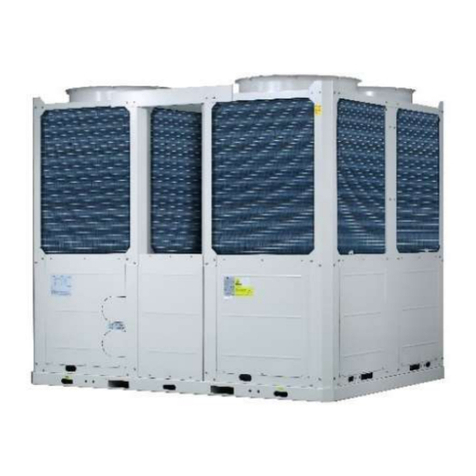
Sinclair
Sinclair SCV-750EB Service manual
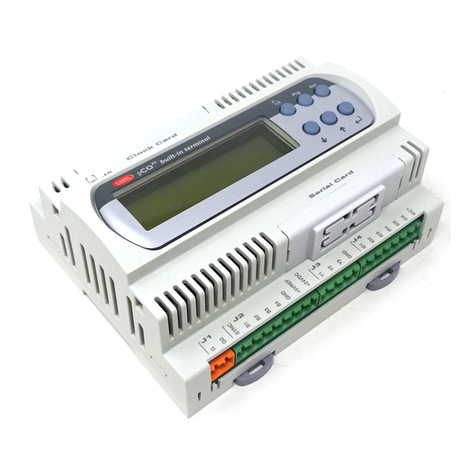
Carel
Carel pCO1 series instructions

Skope
Skope Pegasus PG100HC-2 user manual
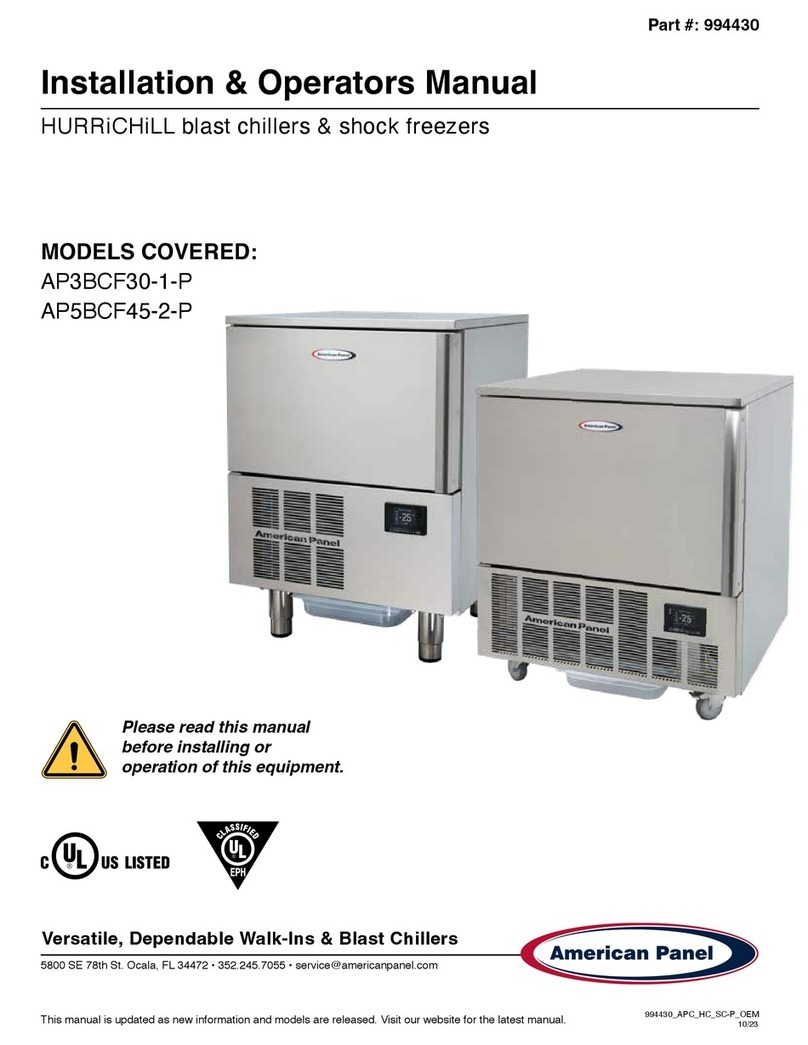
American Panel
American Panel AP3BCF30-1-P Installation & operator's manual
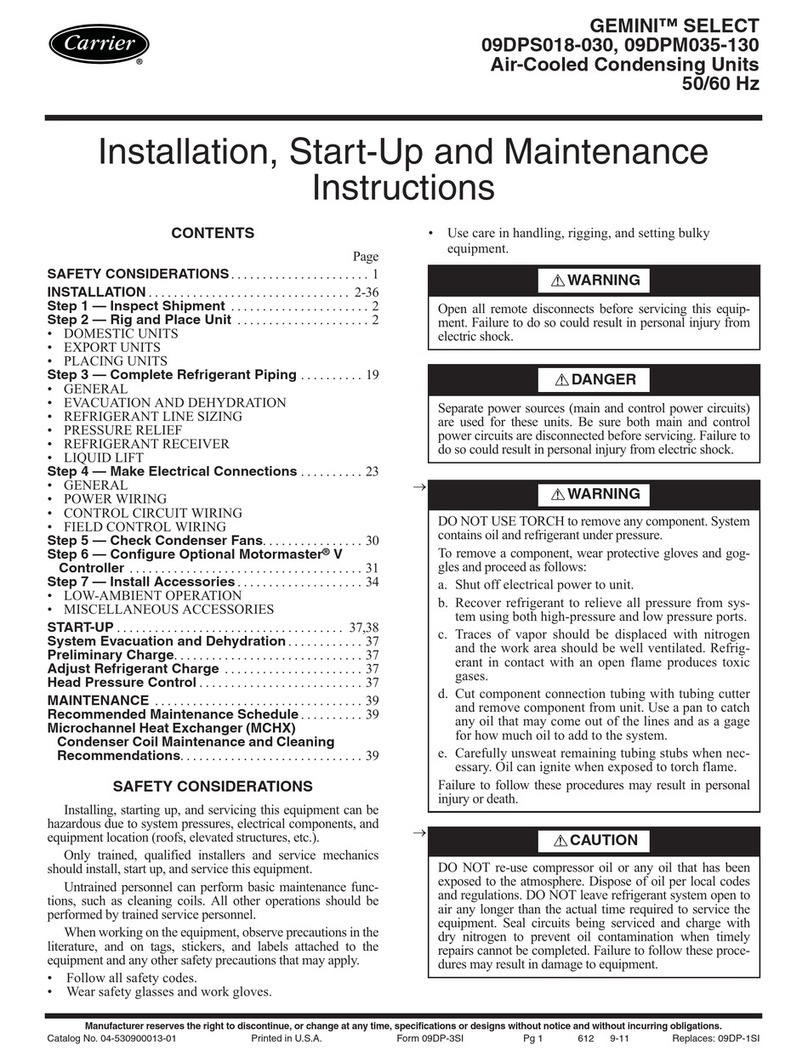
Carrier
Carrier GEMINI 09DPS018 Installation, start-up and maintenance instructions
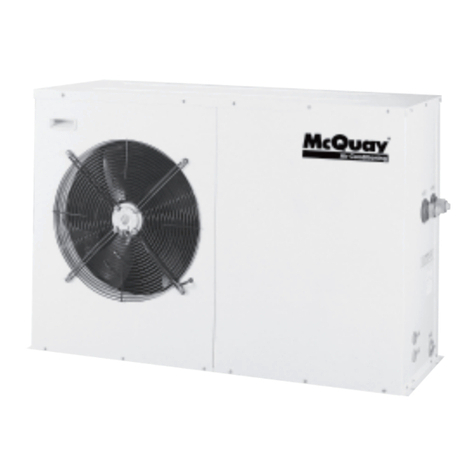
McQuay
McQuay R410A SINGLE COMPRESSOR SERIES installation manual

